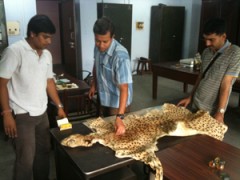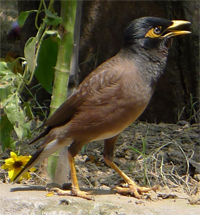John Tann, Australian Museum / Atlas of Living Australia, June 2011
The Atlas of Living Australia (ALA) is mentoring the Wildlife Institute of India to build a node for aggregating and sharing data about Indian biodiversity.This Indian data node will connect to other countries and agencies currently contributing to GBIF, the Global Biodiversity Informatics Facility.

Photo courtesy: John Tann.
In June, I represented ALA at a workshop on digitising and mobilising natural history collections in Kolkata, India. People from across India attended the workshop, representing key agencies working with plants and animals. There were also representatives from Nepal and Taiwan, and technical people from GBIF. The aim of the workshop was to show the advantages and importance of digitising and sharing data and to discuss the outcomes of their user needs study.
A cyclone in the Bay of Bengal drenched Kolkata with 150 mm of rain in just a few hours. Workshop participants piled into a bus which took us through the flooded and busy streets of Kolkata to visit the Zoological Survey of India and the Botanical Survey of India. These agencies have been collecting specimens for over 100 years, and hold extensive collections. In order to share their data effectively, information attached to specimen labels needs to be added to a database, and in some cases photographs taken of significant specimens. The Botanical Survey of India has been photographing and digitising their herbarium sheets for some time. The Zoological Survey of India is keen to digitise some of their collections; it also has a large library with many old and uncommon books, ideal for contributing to the Biodiversity Heritage Library.
At the Wildlife Institute of India in Dehradun, Karthik Vasudevan has been working with his colleagues to build the Indian GBIF node and bring together a community of plant and animal specialists to share data. 12 months ago, Karthik visited Australia and spent several days with ALA staff in Canberra to learn some of the methods and strategies for bringing data together. Dehradun is in the north of India, not so far from the Himalayas, and also home to the Forest Research Institute. India has an extensive forest reserve system. I was warned not to walk alone in the forests because of the possibility of meeting a lone elephant or tiger. Instead of being trampled or eaten, Karthik and I developed plans for building an Indian Biodiversity Informatics Facility.

Photo courtesy: John Tann.
I demonstrated the ALA to an interested group of graduate students and wildlife professionals. Having worked with ALA since its early days, I find it easy to be enthusiastic about what the Atlas is now delivering and how it is presenting collections, specimens and descriptions of plants and animals. Its performance in India was not too slow, even when loading complex maps over a distant internet connection. The demo raised lots of discussion and questions. People were especially keen to know if ALA could be used with Indian maps and data, and we have been exploring ways for some Atlas components to be re-used and re-purposed in other countries.